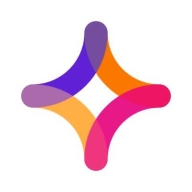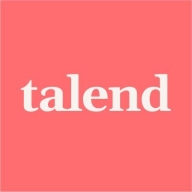

Jitterbit Harmony and Talend Data Fabric are competing integration platforms with differing feature sets. Talend Data Fabric appears to have an advantage due to its comprehensive suite of features and broader functional range, appealing to enterprises with complex needs.
Features: Jitterbit Harmony is appreciated for its intuitive design, advanced data transformation abilities, and seamless Salesforce integration. Its simplicity aids in swift and efficient data processes. Talend Data Fabric is recognized for its robust open-source tools, excellent data management solutions, and multi-cloud support, offering expansive opportunities for complex projects.
Room for Improvement: Jitterbit Harmony could enhance scalability options, improve multi-cloud orchestration, and add more customizable features to cater to enterprise needs. Talend Data Fabric might work on simplifying its UI further for less experienced users, enhance its customer support responsiveness, and offer more transparent pricing.
Ease of Deployment and Customer Service: Talend Data Fabric offers flexibility with its cloud and on-premise deployment model, supporting complex structures effectively, though it may require more setup time. In contrast, Jitterbit Harmony stands out for its faster deployment process and highly responsive customer service, suiting businesses needing quick setups.
Pricing and ROI: Jitterbit Harmony is noted for its cost-competitiveness, providing strong ROI for smaller businesses aiming for budget-friendly solutions. Talend Data Fabric's pricing reflects its extensive feature set, making it suitable for enterprises seeking comprehensive functionality despite higher costs.
| Product | Market Share (%) |
|---|---|
| Talend Data Fabric | 0.9% |
| Jitterbit Harmony | 0.6% |
| Other | 98.5% |


| Company Size | Count |
|---|---|
| Small Business | 8 |
| Midsize Enterprise | 3 |
| Large Enterprise | 1 |
| Company Size | Count |
|---|---|
| Small Business | 4 |
| Large Enterprise | 3 |
Jitterbit Harmony offers an advanced integration platform that simplifies data transformation, helps users quickly connect apps, and automates workflows, streamlining complex business processes efficiently.
Designed to meet the high demands of modern businesses, Jitterbit Harmony enables seamless integration across cloud and on-premise environments. By leveraging its powerful tools and user-friendly design, users can accelerate innovation, reduce operational costs, and enhance productivity. It bridges the gap between traditional and emerging technologies, ensuring organizations can adapt quickly to market changes and remain competitive.
What are the key features of Jitterbit Harmony?Jitterbit Harmony finds its application across numerous industries, from enhancing data integration in the healthcare sector to optimizing supply chain logistics in manufacturing. It supports financial institutions by improving transaction processing and facilitates real-time data connectivity in retail environments, making it a versatile choice for diverse industries looking to innovate rapidly.
Talend, a leader in cloud data integration and data integrity, enables companies to transform by delivering trusted data at the speed of business.
Talend Data Fabric offers a single suite of apps that shorten the time to trusted data. Users can collect data across systems; govern it to ensure proper use, transform it into new formats and improve quality, and share it with internal and external stakeholders.
Over 3,000 global enterprise customers have chosen Talend to help them turn all their raw data into trusted data to make business decisions with confidence — including GE, HP Inc., and Domino’s.
We monitor all Data Integration reviews to prevent fraudulent reviews and keep review quality high. We do not post reviews by company employees or direct competitors. We validate each review for authenticity via cross-reference with LinkedIn, and personal follow-up with the reviewer when necessary.